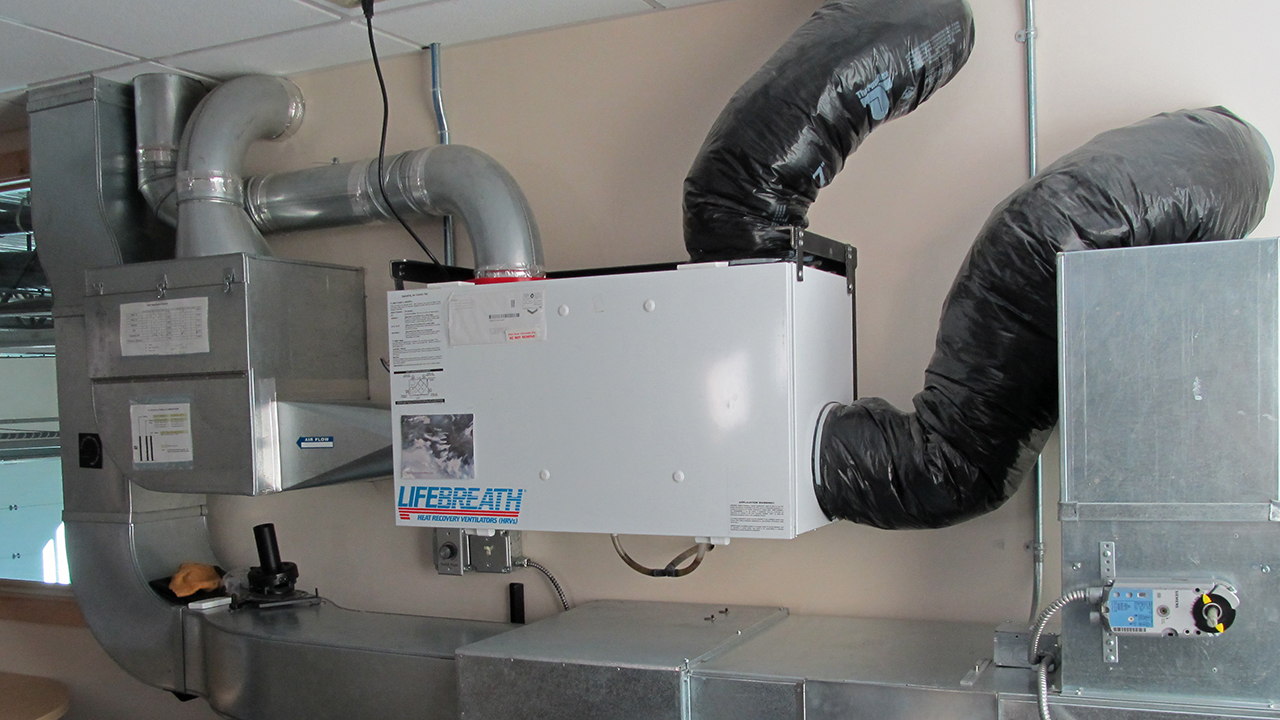Discovering the Benefits of Heat Recovery Ventilation for Energy Effectiveness in Houses
Heat Recovery Ventilation (HRV) systems provide house owners a practical method to enhancing energy efficiency. By redeeming warm from outward bound air, these systems can substantially lower heating & cooling costs. In addition, they supply a stable supply of fresh air, improving interior air top quality and comfort levels. As house owners consider lasting choices, understanding the nuances of HRV systems ends up being increasingly vital. What aspects should one examine prior to making such a financial investment?
Understanding Heat Recovery Ventilation Solutions

Exactly How HRV Enhances Indoor Air High Quality

Power Savings: The Financial Benefits of HRV
Maximizing power performance, heat recovery ventilation (HRV) systems provide considerable economic benefits for home owners. By recouping and reusing warm from exhaust air, HRVs substantially lower cooling and heating expenses. This innovation can result in energy financial savings of up to 30%, depending upon environment and use patterns. Homeowners typically notice reduced energy bills soon after setup, making HRVs a financially wise investment over time. In addition, lots of regions provide motivations or discounts for energy-efficient upgrades, further boosting the monetary appeal. As power costs continue to rise, the cost-effectiveness of HRVs becomes increasingly clear. In general, the consolidation of HRV systems not only promotes energy effectiveness but also adds to long-lasting financial savings for households.
The Ecological Effect of Heat Recovery Ventilation
A substantial ecological benefit of heat recovery ventilation (HRV) systems hinges on their capability to reduce overall energy usage. By reclaiming warm from exhaust air and moving it to incoming fresh air, HRV systems minimize the demand for energy-intensive heating and cooling Visit Website approaches. This decrease in power need adds to lower greenhouse gas discharges, as less nonrenewable fuel source is required to preserve comfy interior temperature levels. Additionally, HRV systems boost indoor air quality by efficiently trading stale air with fresh exterior air, decreasing reliance on mechanical air conditioning systems that can hurt the setting. Generally, the execution of HRV systems sustains lasting living practices and straightens with worldwide efforts to deal with climate change by advertising power performance in residential settings.
Selecting the Right HRV System for Your Home
How can homeowners guarantee they pick the best heat recovery ventilation (HRV) system for their needs? First, they ought to examine their home's size and design, as these elements influence airflow demands. Next off, evaluating the system's performance additional resources rankings is crucial, as higher ratings indicate far better efficiency and power cost savings. Property owners ought to also take into consideration installment and upkeep prices, comparing different brand names and designs for worth. Furthermore, it is very important to examine sound degrees, as some systems run more quietly than others. Consulting with HVAC specialists can supply tailored referrals based on specific home problems. Ultimately, taking a look at user evaluations and service warranties can help in making an educated decision, ensuring that the picked HRV system successfully enhances interior air quality and energy effectiveness.
Often Asked Inquiries

Just how Often Should I Tidy or Maintain My HRV System?
The regularity of cleaning or maintaining a warm recovery ventilation (HRV) system commonly depends on usage and ecological variables. Generally, it is suggested to carry out upkeep every six months to ensure peak efficiency and air high quality.

Can HRV Systems Help In Reducing Humidity Degrees Indoors?
HRV systems can effectively lower interior humidity degrees by trading stale, damp air with fresh, drier air from outdoors. HRV Heat Recovery Ventilation. This process aids preserve a balanced indoor atmosphere, enhancing comfort and stopping moisture-related issues
What Is the Life-span of a Typical HRV System?
The life expectancy of a regular heat recovery ventilation (HRV) system differs, usually lasting in between 10 to 15 years. Normal upkeep can prolong its effectiveness and operational life, making certain my explanation peak efficiency throughout its use duration.
Exist Any Type Of Sound Worry About HRV Systems?
Noise interest in HRV systems can occur, especially from fan procedure. Nonetheless, several contemporary systems are developed to reduce sound degrees, guaranteeing they operate quietly while keeping effectiveness, which deals with prospective disruptions in living settings.
Can I Mount an HRV System Myself, or Do I Need a Specialist?
The private contemplated whether to set up the heat recovery ventilation (HRV) system directly or employ an expert. Typically, while do it yourself installment is possible, experience assurances correct capability and compliance with local building codes, boosting system efficiency.